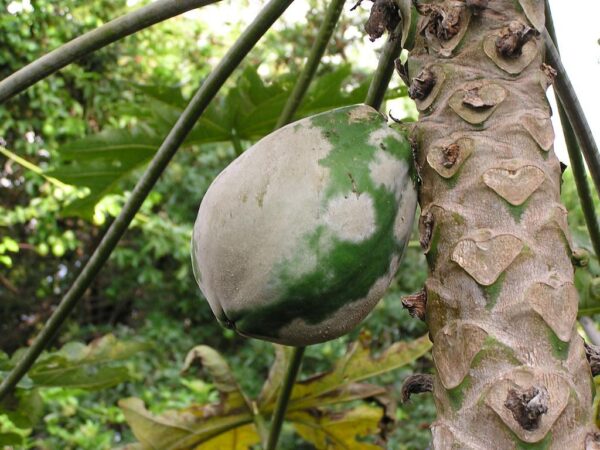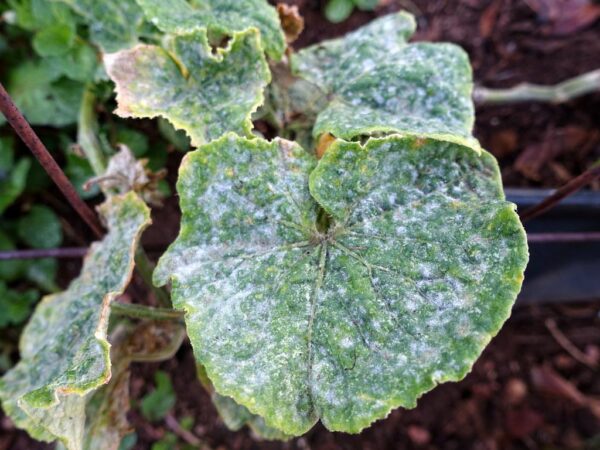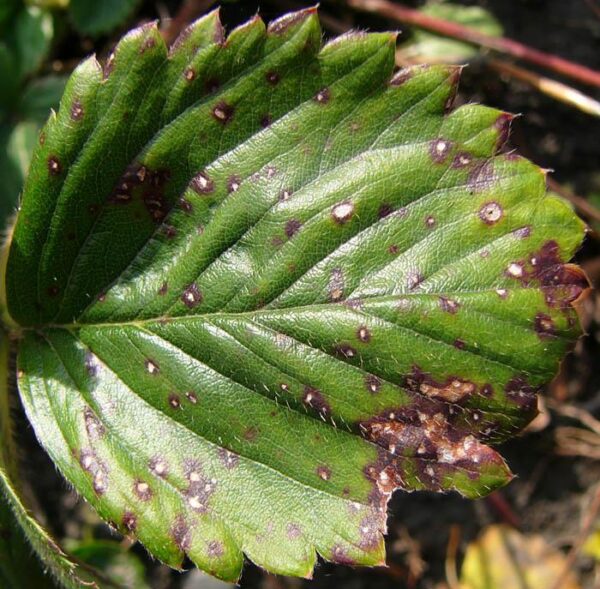
Powdery mildew (Podosphaera spp.)
Caused by different species of the genus Podosphaera, such as Podosphaera clandestina, Podosphaera leucotricha, Podosphaera tridactyla, and Podosphaera aphanis, these diseases are characterized by white or gray powdery growths on the leaves, stems, flowers, and fruits of plants. Each species targets specific hosts, affecting crops like cherries, apples, almonds, plums, peaches, grapes, strawberries, and various ornamentals, leading to significant agricultural and ornamental losses.
Powdery mildew fungi are biotrophic, requiring living plant tissue to grow and reproduce. They spread primarily through wind-dispersed spores, initiating infections under favorable conditions, typically moderate temperatures and high humidity. Unlike many other fungal diseases, powdery mildew does not require water on the leaf surface for spore germination, making it a prevalent issue in both arid and humid climates. Overwintering structures allow the fungi to survive harsh conditions, releasing spores to infect new growth in spring.
Control
Cultural Controls
Effective management of powdery mildew begins with cultural practices:
- Plant Selection and Spacing: Choose resistant varieties and ensure adequate spacing to promote airflow.
- Pruning and Sanitation: Regular pruning and removal of infected debris reduce the fungal inoculum available for new infections.
- Irrigation Practices: Water plants at the base to avoid wetting foliage and delay overhead irrigation in susceptible crops to reduce disease pressure.
- Environmental Management: Position plants in sunny areas and manage greenhouse humidity to discourage disease development.
Chemical Controls
A range of fungicides is effective against powdery mildew, including azoxystrobin, pyraclostrobin, penthiopyrad, and sulfur-based products. The selection of fungicides should consider the specific pathogen and crop. It is crucial to rotate fungicides with different modes of action to prevent the development of resistance. Always follow manufacturer instructions for safe and effective application.
Biological and Alternative Controls
Biological controls, such as Bacillus subtilis strains and other biocontrol agents, have shown effectiveness in managing powdery mildew. Natural remedies, including plant oil extracts and UV-C light treatments, offer alternative or supplementary measures, particularly in organic production systems.
Integrated Management Strategies
An integrated approach combining cultural, chemical, and biological strategies is most effective for managing powdery mildew. Regular monitoring of plants for early signs of infection, combined with timely intervention, can prevent the spread of the disease and minimize crop damage. Understanding the lifecycle of the specific Podosphaera species affecting your plants is key to implementing targeted control measures at optimal times.
By adopting a holistic approach to powdery mildew management, growers and gardeners can protect their plants from this pervasive fungal disease, ensuring healthy growth and minimizing losses.
Differentiating Between Podosphaera Species
Powdery mildew encompasses a range of diseases caused by the fungal genus Podosphaera. Each species within this genus targets specific plant hosts, exhibiting unique characteristics and life cycles that influence their management strategies. Understanding the differences between these species is crucial for accurate diagnosis and effective control.
Podosphaera clandestina
Podosphaera clandestina primarily affects cherry trees, leading to unmarketable fruit covered in a white fungal growth. This species favors mid to late-season development and is notable for its lifecycle that includes overwintering structures called chasmothecia. These structures release ascospores in spring, initiating new infections. Effective control measures include cultural practices to reduce humidity around the plants and the use of specific fungicides.
Podosphaera leucotricha
Targeting a broad range of hosts, including apples, almonds, and peaches, Podosphaera leucotricha causes powdery growth on leaves, blossoms, and fruit, potentially leading to fruit russeting and increased vulnerability to winter damage. It reproduces through both asexual spores and sexual fruiting bodies, making it a resilient pathogen across various conditions. Management includes pruning, orchard maintenance, and timely fungicide applications.
Podosphaera tridactyla
Affecting plums, peaches, grapes, and more, Podosphaera tridactyla presents as white or gray powdery growths across different plant parts. It survives winter as cleistothecia, with spores released in spring to infect new hosts. Prevention strategies focus on plant resistance, proper spacing, and fungicide use, tailored to the host plant’s specific needs.
Podosphaera aphanis
Known for impacting strawberries, along with other plants like Lady’s-mantle and Rubus species, Podosphaera aphanis thrives in conditions of moderate to high humidity and temperatures between 60°F and 80°F. It spreads primarily through infected transplants and can severely affect both the foliage and fruit of strawberry plants. Management includes renovation of planting beds, use of resistant cultivars, and controlled irrigation practices.





